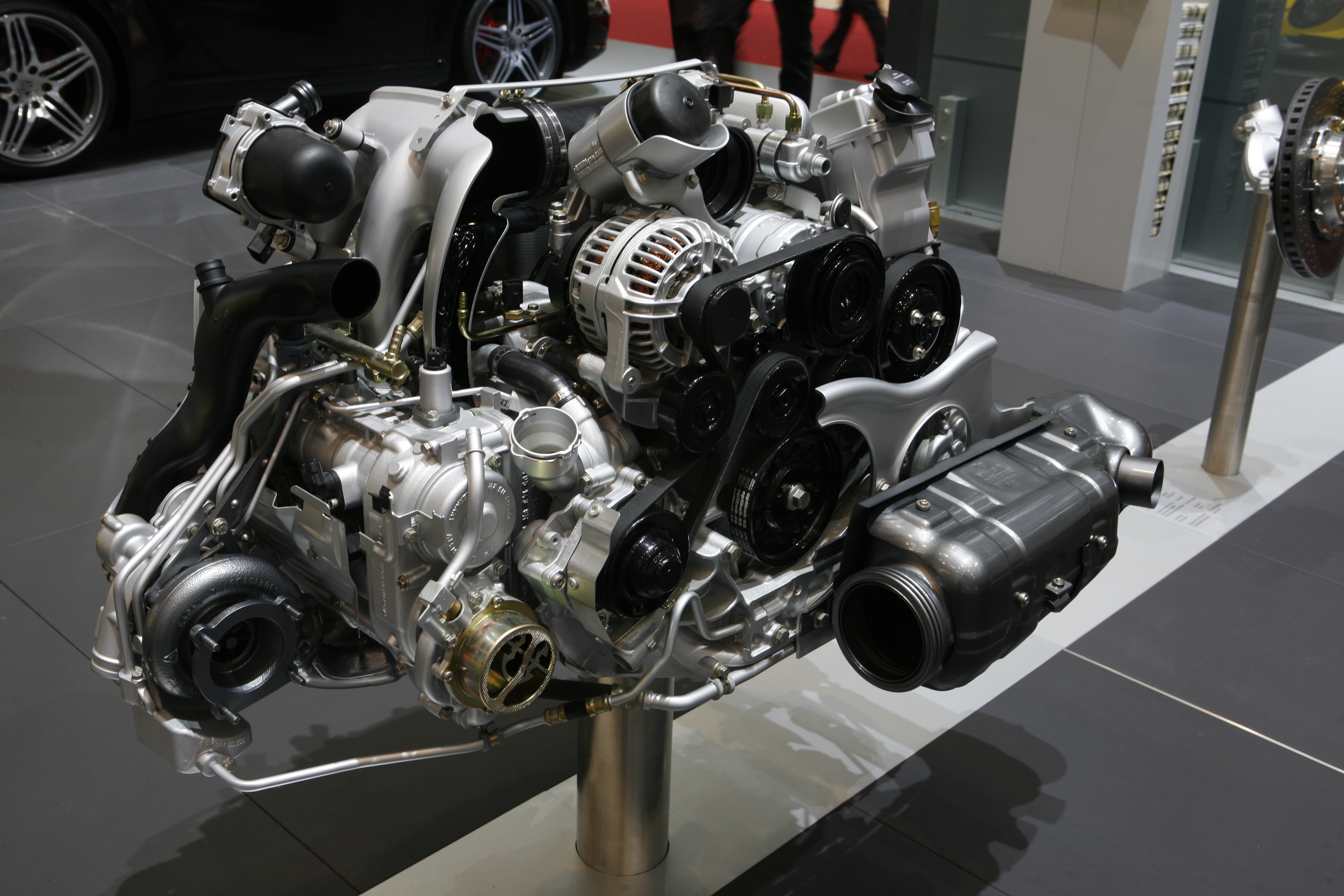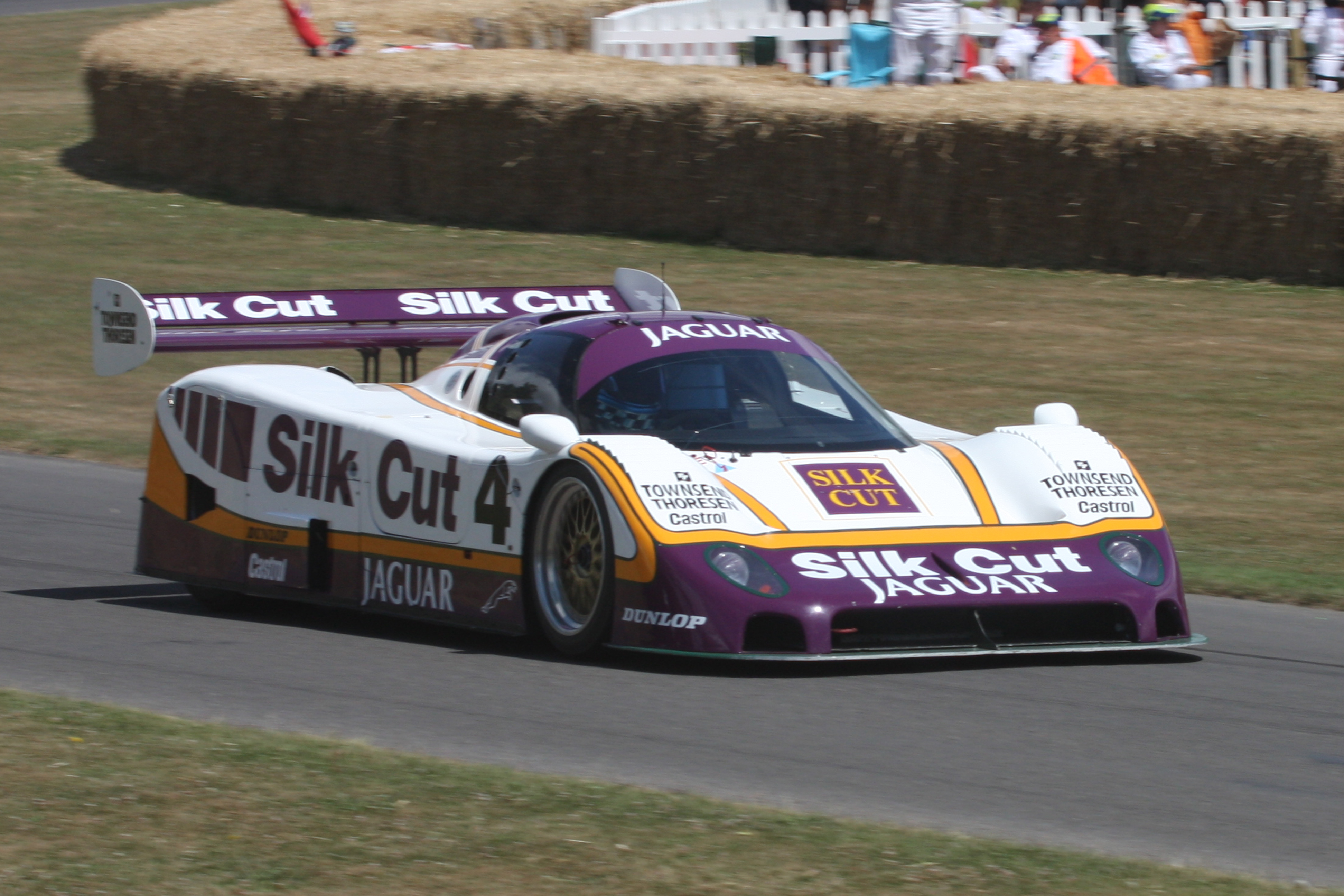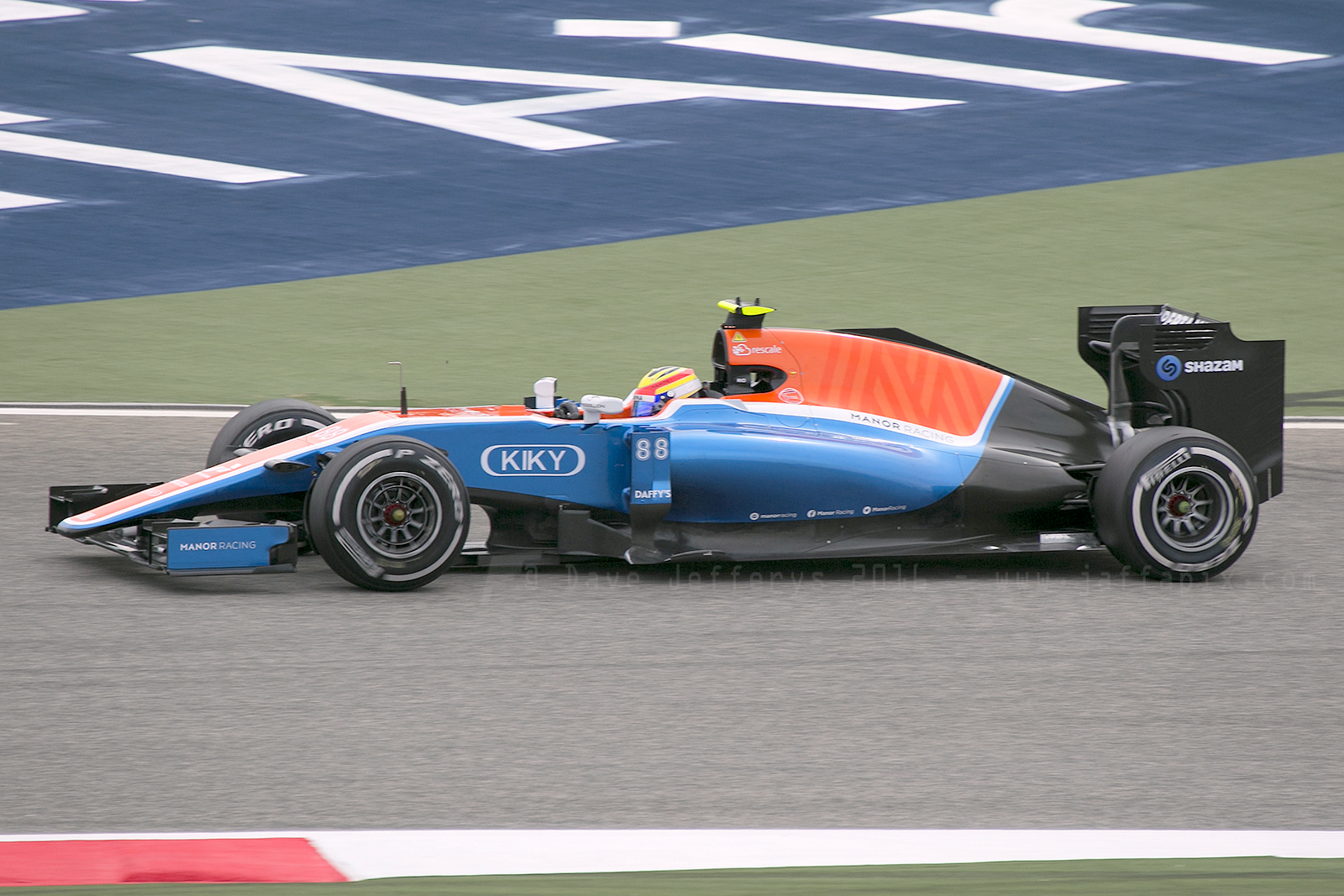|
Porsche Flat-six Engine
The Porsche flat-six engine series is a line of mechanically similar, naturally aspirated and sometimes turbocharged, Flat-six engine, flat-six boxer engines, produced by Porsche for almost 60 consecutive years, since 1963. The engine is an evolution of the Flat-four engine, flat-four Boxer engine, boxer used in the original Volkswagen Beetle. The flat-six engine is most often associated with their Porsche 911, 911 model, Porsche's flagship rear-engined sports car which has used flat-six engines exclusively since 1963. The engines were Air-cooled engine, air-cooled until 1999, when Porsche started using Water cooling (engines), water-cooled engines. In April 2011, Porsche announced the third generation of the 997 GT3 RS with an enlarged 4.0-litre engine having a power output of . The naturally-aspirated 4.0-litre flat-six engine (the largest engine displacement offered in a street-legal 911) was introduced with their 2011 Porsche 911 GT3#997.2 GT3 RS 4.0, 911 (997) GT3 RS 4. ... [...More Info...] [...Related Items...] OR: [Wikipedia] [Google] [Baidu] |
Porsche
Dr. Ing. h.c. F. Porsche AG, usually shortened to Porsche (; see below), is a German automobile manufacturer specializing in luxury, high-performance sports cars, SUVs and sedans, headquartered in Stuttgart, Baden-Württemberg, Germany. The company is owned by Volkswagen AG, a controlling stake of which is owned by Porsche Automobil Holding SE, usually shortened to Porsche SE. Porsche's current lineup includes the 718, 911, Panamera, Macan, Cayenne and Taycan. The origins of the company date to the 1930s when German Bohemian automotive engineer Ferdinand Porsche founded Porsche with Adolf Rosenberger, a keystone figure in the creation of German automotive manufacturer and Audi precursor Auto Union, and Austrian businessman Anton Piëch, who was, at the time, also Ferdinand Porsche's son in law. In its early days, it was contracted by the German government to create a vehicle for the masses, which later became the Volkswagen Beetle. After World War II, when Ferd ... [...More Info...] [...Related Items...] OR: [Wikipedia] [Google] [Baidu] |
Volkswagen Beetle
The Volkswagen Beetle, officially the Volkswagen Type 1, is a small family car produced by the German company Volkswagen from 1938 to 2003. One of the most iconic cars in automotive history, the Beetle is noted for its distinctive shape. Its production period of 65 years is the longest of any single generation of automobile, and its total production of over 21.5 million is the most of any car of a single car platform, platform. The Beetle was conceived in the early 1930s. The leader of Nazi Germany, Adolf Hitler, decided there was a need for a ''people's car''—an inexpensive, simple, mass-produced car—to serve Germany's new road network, the ''Reichsautobahn''. The German engineer Ferdinand Porsche and his design team began developing and designing the car in the early 1930s, but the fundamental design concept can be attributed to Béla Barényi in 1925, predating Porsche's claims by almost ten years. The result was the Volkswagen Type 1 and the introduction of the Volkswage ... [...More Info...] [...Related Items...] OR: [Wikipedia] [Google] [Baidu] |
Sports Prototype
A sports prototype, sometimes referred to simply as a prototype, is a type of Auto racing, race car that is used in high-level categories of sports car racing. They are purpose-built auto-sports race cars, as opposed to production-car based or street-legal, low-volume Homologation (motorsport), homologation specials – thus entirely not intended for consumer purchase, or production beyond the fabrication of the (nearly) unique cars entered into races and in race-car competition classes or "formulas", with sufficiently open regulations to allow for vehicles of unique design to partake. Prototype racing cars have competed in sports car racing since before World War II, but became the top echelon of sports cars in the 1960s as they began to replace Homologation (motorsport), homologated sports cars. Current Automobile Club de l'Ouest, ACO regulations allow most sports car series to use two forms of cars: ''grand tourers (GT cars)'', which are strictly based on production street ca ... [...More Info...] [...Related Items...] OR: [Wikipedia] [Google] [Baidu] |
Porsche 962
The Porsche 962 is a sports prototype racing car designed and built by Porsche. Created to replace the Porsche 956, 962 was introduced at the end of 1984 and replaced the 956 in the International Motor Sports Association, IMSA's IMSA GT Championship, GTP class in 1985 due to regulation changes obsoleting the 956. It was also introduced in the World Sportscar Championship's Group C category in 1984. Over its decade-long career, the car in its Group C form won the 24 Hours of Le Mans twice, with a derivative of the car, the Dauer 962 Le Mans, winning a further title in 1994. In total, the 962 scored nineteen total constructor's championships across various series. The 962's successor was the Porsche WSC-95, introduced for the 1996 24 Hours of Le Mans, but did not receive factory backing or support. Development When the Porsche 956 was developed in late 1981, the intention of Porsche was to run the car in both the World Sportscar Championship and the North American IMSA GTP Cham ... [...More Info...] [...Related Items...] OR: [Wikipedia] [Google] [Baidu] |
Porsche Boxster/Cayman
The Porsche Boxster and Cayman are Mid-engine design, mid-engine two-seater sports cars manufactured and marketed by German automobile manufacturer Porsche across four generations—as a two-door, two-seater Roadster (automobile), roadster (Boxster) and a three-door, two-seater fastback coupé (Cayman). The first generation Boxster was introduced in 1996; the second generation Boxster and the Cayman arrived in late 2005; and the third generation launched in 2012. Since the introduction of the fourth generation in 2016, the two models have been marketed as the Porsche 718 Boxster and Porsche 718 Cayman. The nameplate ''Boxster'' is a portmanteau of ''boxer'', a reference to its flat or boxer engine, and Speedster, a nod to the original Porsche Speedster of the 1950's. The nameplate ''Cayman'' is an alternative spelling of caiman, a member of the alligatoridae, alligator family. Overview Boxster The Porsche Boxster is a mid-engine two-seater roadster. It was Porsche's first road ... [...More Info...] [...Related Items...] OR: [Wikipedia] [Google] [Baidu] |
Rear Engine
In automobile design, a rear-engine design layout places the engine at the rear of the vehicle. The center of gravity of the engine itself is behind the rear axle. This is not to be confused with the center of gravity of the whole vehicle, as an imbalance of such proportions would make it impossible to keep the front wheels on the ground. Rear-engined vehicles almost always have a rear-wheel drive car layout, but some are four wheel drive. This layout has the following features: *Packaging: since there is no need for a transmission tunnel, the floor can be flat. *Rear traction: having the engine located over the driven wheels increases downward pressure, which is helpful for grip on loose surfaces, although can be prone to oversteer. *Simplicity of manufacture: the engine is near the driven wheels, and the transmission can be merged with the differential to save space. This layout was once popular in small, inexpensive cars and light commercial vehicles. Today most car makers have ... [...More Info...] [...Related Items...] OR: [Wikipedia] [Google] [Baidu] |
Porsche 959
The Porsche 959 is a sports car manufactured by German automobile manufacturer Porsche from 1986 to 1993, first as a Group B rally car and later as a road legal production car designed to satisfy FIA homologation regulations requiring at least 200 units be produced. The twin-turbocharged 959 was the world's fastest street-legal production car when introduced, achieving a top speed of , with some variants even capable of achieving . Combining race-car performance with luxury-sedan comfort and everyday drivability in dry, wet and snowy conditions, it was considered the most technologically advanced road car of its time. After the successful introduction of all-wheel drive on more rally-specific cars like the Audi Quattro, it was one of the first pure high-performance sports-cars with all-wheel drive, providing the basis for Porsche's first all-wheel drive 911 Carrera 4 model. Its performance convinced Porsche executives to make all-wheel drive standard on all turbocharged versi ... [...More Info...] [...Related Items...] OR: [Wikipedia] [Google] [Baidu] |
Mid-engine
In automotive engineering, a mid-engine layout describes the placement of an automobile engine in front of the rear-wheel axles, but behind the front axle. History The mid-engine, rear-wheel-drive format can be considered the original layout of automobiles. A 1901 Autocar was the first gasoline-powered automobile to use a drive shaft and placed the engine under the seat. This pioneering vehicle is now in the collection of the Smithsonian Institution. Benefits Mounting the engine in the middle instead of the front of the vehicle puts more weight over the rear tires, so they have more traction and provide more assistance to the front tires in braking the vehicle, with less chance of rear-wheel lockup and less chance of a skid or spin out. If the mid-engine vehicle is also rear-drive the added weight on the rear tires can also improve acceleration on slippery surfaces, providing much of the benefit of all-wheel-drive without the added weight and expense of all-wheel-drive co ... [...More Info...] [...Related Items...] OR: [Wikipedia] [Google] [Baidu] |
Porsche 914
The Porsche 914 or VW-Porsche 914 is a mid-engined sports car designed, manufactured and marketed collaboratively by Volkswagen and Porsche from 1969 until 1976. It was only available as a targa-topped two-seat roadster powered by either a flat-4 or flat-six engine. History Pre-development By the late 1960s, both Volkswagen and Porsche were in need of new models; Porsche was looking for a replacement for their entry-level 912, and Volkswagen wanted a new range-topping sports coupé to replace the Volkswagen Type 34 Karmann Ghia coupé. At the time the majority of Volkswagen's development work was handled by Porsche as part of an agreement that dated back to Porsche's founding. Volkswagen needed to contract out one last project to Porsche to fulfill the contract, and decided to make the 914 that project. Ferdinand Piëch, who was in charge of research and development at Porsche, was put in charge of the 914 project. In 1966 and 1967, German company Gugelot Design ... [...More Info...] [...Related Items...] OR: [Wikipedia] [Google] [Baidu] |
Evo (magazine)
''Evo'' is a British automobile magazine dedicated to performance cars, from hot hatches to supercars published by Carwow. History In 1995, then Harpenden-based farmer and property developer Harry Metcalfe had become involved in car tests for magazine publishers, after he purchased the first Maserati Ghibli Cup in 1994, through which he had made contacts into the motoring media. After EMAP decided to integrate specialist magazine '' Performance Car'' into ''Car'' magazine in 1998, Metcalfe and motoring journalist John Barker began forming plans to fill what they saw as a gap in the specialist motoring magazine market.Collecting Cars podcast - Chris Harris Talks Cars with Harry Metcalfe - 2 October 2019 Metcalfe formed the business and would run the business side, with Barker joined by writers including Richard Meaden, David Vivian and Peter Tomalin all holding a minority share. Metcalfe created a business plan based on potentially selling his family holiday home in Wales, a ... [...More Info...] [...Related Items...] OR: [Wikipedia] [Google] [Baidu] |
Power-to-weight Ratio
Power-to-weight ratio (PWR, also called specific power, or power-to-mass ratio) is a calculation commonly applied to engines and mobile power sources to enable the comparison of one unit or design to another. Power-to-weight ratio is a measurement of actual performance of any engine or power source. It is also used as a measurement of performance of a vehicle as a whole, with the engine's power output being divided by the weight (or mass) of the vehicle, to give a metric that is independent of the vehicle's size. Power-to-weight is often quoted by manufacturers at the peak value, but the actual value may vary in use and variations will affect performance. The inverse of power-to-weight, weight-to-power ratio (power loading) is a calculation commonly applied to aircraft, cars, and vehicles in general, to enable the comparison of one vehicle's performance to another. Power-to-weight ratio is equal to thrust per unit mass multiplied by the velocity of any vehicle. Power-to-weight ( ... [...More Info...] [...Related Items...] OR: [Wikipedia] [Google] [Baidu] |
Porsche 911 GT3
The Porsche 911 GT3 is a high-performance homologation model of the Porsche 911 sports car. It is a range of high-performance models, which began with the 1973 911 Carrera RS. The GT3 has had a successful racing career in the one-make national and regional Porsche Carrera Cup and GT3 Cup Challenge series, as well as the international Porsche Supercup supporting the FIA F1 World Championship. __TOC__ Road cars 996 GT3 The "GT3" nameplate was introduced in 1999 as part of the first generation of the Porsche 996 model range (commonly known as 996.1) as a homologation model for the cars entered in the FIA GT3 cup. As with Porsche's previous 911 RS models, the 996 GT3 was focused on racing, and so was devoid of items that added unnecessary weight to the car. Sound deadening was almost completely removed, as were the rear seats, rear loud speakers, sunroof, and air conditioning, although automatic air conditioning and CD/radio became no-cost optional add-ons. The engine o ... [...More Info...] [...Related Items...] OR: [Wikipedia] [Google] [Baidu] |








